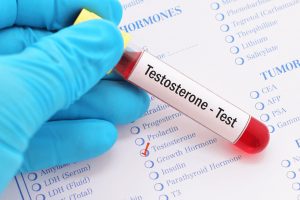
As men get older, their levels of testosterone naturally decrease. The side effects of this process include loss of muscle and bone mass, weight gain, low levels of libido, depression, and lethargy. These symptoms can have really negative effects on men’s overall well-being and it is becoming more common to seek medical help to delay or prevent them altogether.
One route that many men are now considering is Testosterone Replacement Therapy (TRT). Testosterone replacement in the UK is becoming more and more common for men with low levels of testosterone, and there are many safe routes to consider. It is worth remembering however that the results of TRT can vary dramatically from person to person; some men report the effects being life-changing and incredibly positive, others report the treatment having a lesser effect with the ongoing symptoms of low testosterone persisting.
Firstly, TRT is not an anabolic steroid and will not give you the same effects of this form of treatment. Replacement therapy will simply bring your levels of testosterone back to their natural levels. This treatment does not pump your body full of testosterone to unnaturally high levels in the same way bodybuilders take testosterone, alongside other performance-enhancing drugs.
There are many people now offering services for TRT and it is best to speak to a doctor who can talk you through your different options for treatment. In order to initially test your levels of testosterone, you will need to take a blood test, this can be done with an at-home finger-prick testing service, or you can visit your local clinic to arrange an appointment.
Once you’ve had your blood test and a consultation with your doctor about the course of therapy, the next thing to consider is how you would prefer to have the TRT administered. It currently comes in four forms; a testosterone gel that is rubbed onto the skin, the testosterone in the gel seeps into the skin which takes between 2-5 hours; testosterone pellets that a doctor implants under the skin, providing a slow release of testosterone over 3-6 months; testosterone tablets that are taken orally every 12 hours, it dissolves in the mouth and slowly releases testosterone into the body; and finally testosterone injections administered by a doctor once every 1-2 weeks.
The injection route is the most common form of TRT and comes in three different forms; Cypionate, Enanthate and Propionate. As this form of treatment requires the presence of a doctor it has become the most popular for many patients. As your doctor administers your injections they will monitor your progress through the TRT process, to ensure you are receiving the correct dosage and that there are no problems. This is also a good opportunity to check blood levels with further blood tests to make sure the therapy is running smoothly.
There are plenty of other things to consider, including the price, and whether to undergo the treatment privately or through the NHS, though this treatment is rarely covered by the NHS it is worth investigating with your local GP.

